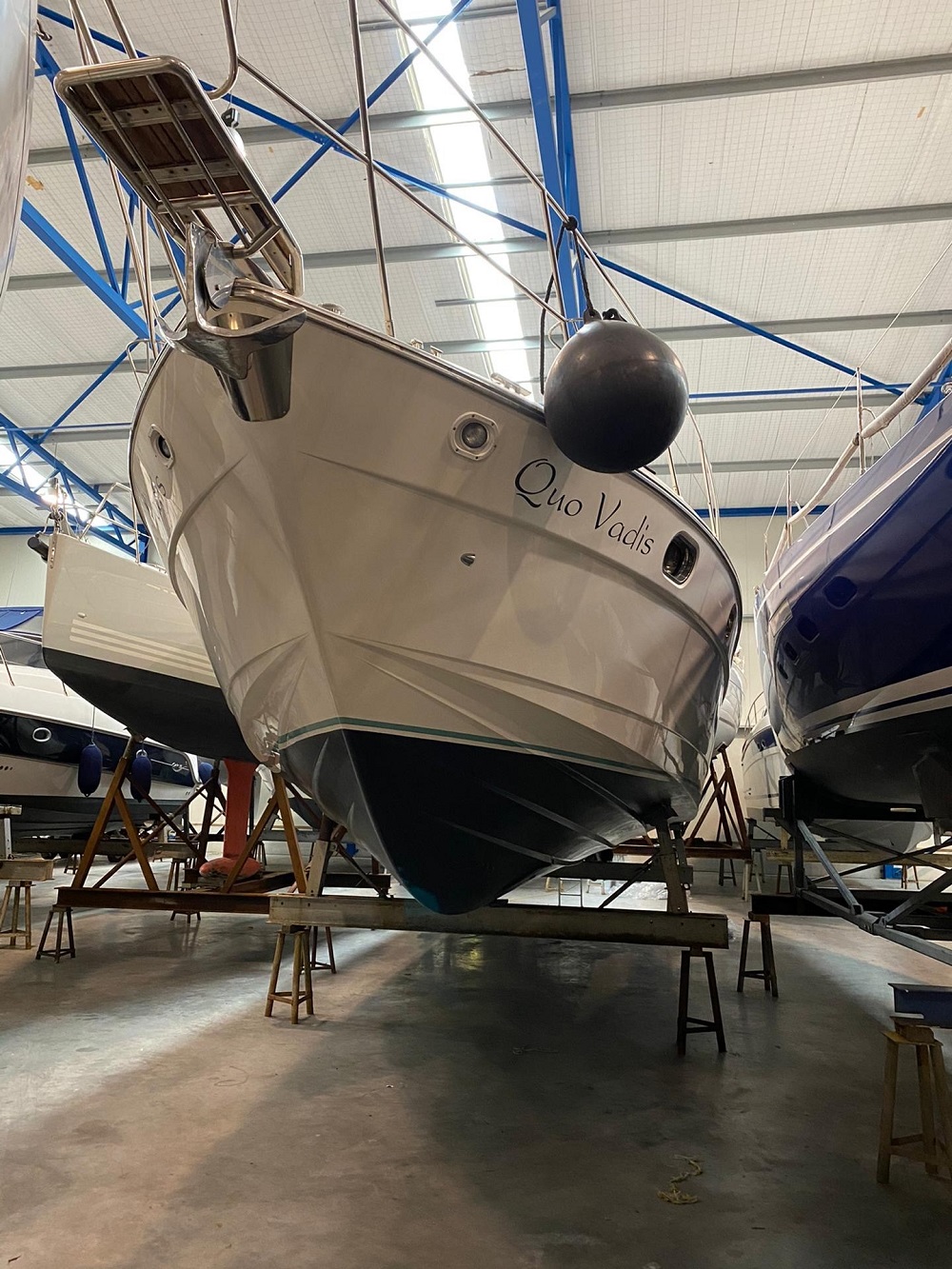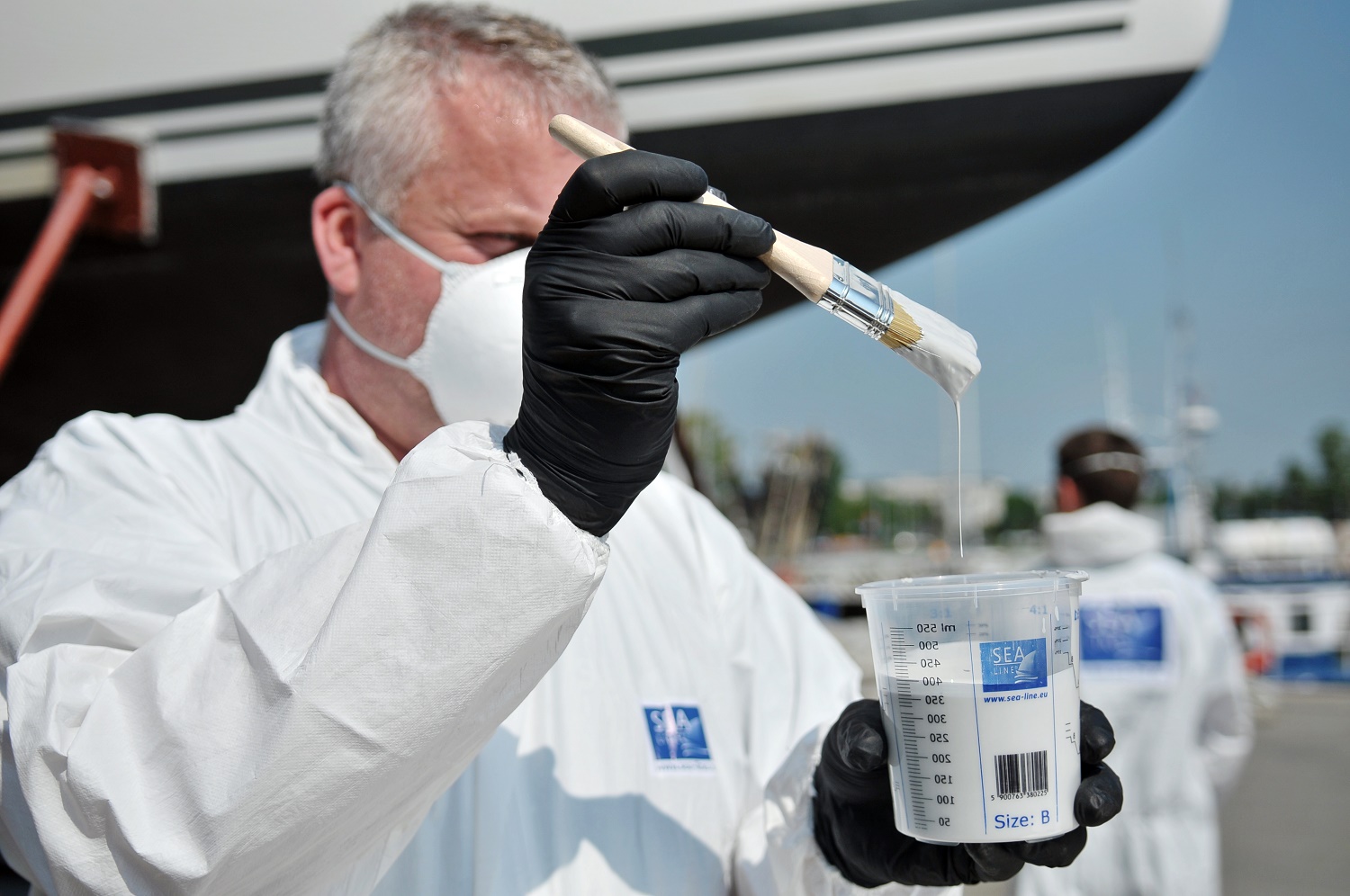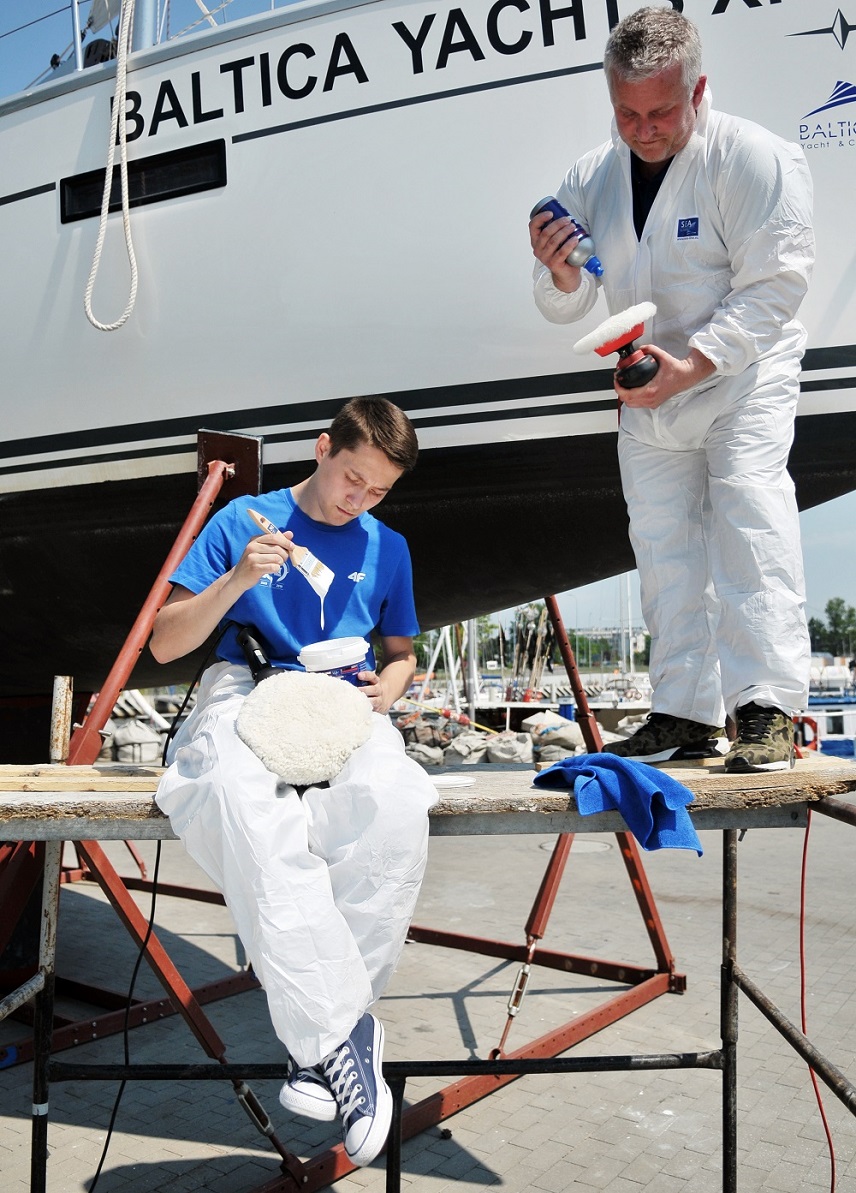Painting your boat with PU lacquer
Repainting boats with boat paint, how do you start?
What paint do you need for painting boats?
A boat made of polyester is durable, but it can still lose its shine. In most cases, you could solve this by polishing the gelcoat. If the gelcoat is damaged, you can do spot repair with a gelcoat repair kit. But in some cases, the only solution is to repaint your boat.
What is the best way to do this? In this article, you will read more about how to prepare the substrate. Which materials you can use to repair and then apply the paint system.
Are you not a 'real painter'? No worries, with V-Sure's current products you are guaranteed a prefect result. Our products are adapted to every type of user or processor. If you want to do a one-off job, it is best to use a roller or brush. If you want to work professionally, spraying is much faster and more efficient. We have put together different paint systems so that you can expect a durable and beautiful result under any circumstances.

Painting a wooden boat
If your boat is wooden, you will need to use suitable primers or undercoats for it. Wood has a different expansion and shrinkage than, for example, polyester or metal. Here your paint needs to retain a little more elasticity, but the vapour permeability of your paint system is also important. With wood, you usually want to leave the beautiful wood colour or structure visible. In that case, it is best to work with transparent and colourless systems, which provide a beautiful look and let the wood shine in high gloss. Of importance here is the UV resistance of your varnish or clear varnish.
For wood, you can use either high-quality 1K or 2K varnish. The 2K PUR varnish consists of 2 components (varnish + hardener). After mixing the 2 components together; you still have hours to process this product. There is no rush. Do be well informed about the adhesion to different types of wood. Teak and padouck, for instance, are types of wood that can cause problems with regard to the adhesion of your paint system.
Painting a metal boat
With a yacht in metal, you have to deal with quite different factors. For example, rust or corrosion is one of the most common problems. Here, it is best to make sure you apply an initial anti-corrosion primer or coat and then apply the primer and paint over it. This type of substrate usually involves working with much harder paint and usually 1K systems. After all, the risk of damage is much higher and with a 1K system you can paint certain parts more quickly and easily.
Paint for boats
Paint not only gives your boat a nice-looking finish, a good coat of paint also provides the necessary protection against the natural elements - the sea, rain, wind and sun - that continuously attack the surface of your boat throughout the season. We would be happy to explain the various options when it comes to paint and how to achieve the best results.
Why choose boat paint?
Moisture and UV radiation can cause many problems for wooden boats and metal boats alike. Properly protecting your boat's surface will prolong its lifespan. For a good protective and beautiful finish, the composition of the paint must meet a number of specific characteristics. There are many different paints, for all types of surfaces and for all special requirements. Discover them all in our range or contact us for additional advice.
What to consider when choosing paint?
Of course you want to make the right paint choice. That is why it is interesting to consider your project from a number of different points of view.
What about boat surface preparation?
The most important thing is proper surface preparation or pre-treatment before applying a preservative, primer or finish coat. This includes the complete removal of all antifouling. With poor preparation, the consequences will always be visible and felt later. Your boat surface will not be sufficiently protected and then the paint may come off.


Does the surface matter?
If you paint on metal or polyester, you can use two types of paint: 2K PUR lacquer and a 1K Enamel. On a wood substrate, your choice is limited by the type of construction. Conventional and high-quality 1K component systems are suitable for all wood constructions.
Good to know: In places that require regular maintenance, a conventional and high-quality 1K component paint is more suitable than two-component paint.
Clinker and carvel structures, over-seam structures are naturally ductile. Hard paint systems such as two-component and those containing polyurethane have insufficient elasticity to accommodate these movements and are likely to crack. These systems are better suited to the very stable constructions such as bonded wood, paste wood and laminate where epoxy adhesives have been used.
What maintenance or repair is needed?
Places that are walked on a lot or that wear faster, such as gunwale rails and the sides of hatches, should be repaired more often to keep them at their best. Our 2K paint does offer excellent protection against abrasion, but in exceptional circumstances it can also wear off. As conventional and high-quality 1K systems are much easier to touch up and thus easier to get right again than 2K paint, they are better suited for these parts.
Applying boat paint
A properly prepared surface is essential for a good end result. But if the paint is applied poorly, all that careful preparation will have been useless.
- So make sure you have enough paint for the whole job. Rather a little too much than too little.
- Stir the paint well with a steel paint spatula or a stirring wood.
- All paints can be applied with a brush and/or paint pad roller (alone or together with brush or paint pad) and sprayer.
Important to know: painting late in the day can lead to loss of gloss or haze as the temperature drops in the evening and condensation forms on the freshly painted surface. Possibly heating stoves can provide a stable temperature, but be careful with heavy gas or other organic fuel stoves, as they introduce more moisture into the air.
How do you apply boat paint?
Applying boat paint with a brush
Use as large a brush as possible. For high-gloss paints, long flexible bristles are best. A good way to apply paint with a brush is the method where the paint is applied with diagonal movements from left to right and vice versa. You then continue to apply this layer of paint by making horizontal movements and finally finish off nicely with slight vertical movements. This way, the paint always flows well and you get the best result.
The brush is the ideal tool for applying the first primer layer. After all, the brush is used to "massage" the paint into the substrate. The paint penetrates the sanding grooves and thus adheres well to the surface. The best results are obtained with a brush with beveled fine bristles. Poor-quality brushes do not produce the desired result. Therefore, watch out for brushes that "lose bristles" while working. A high-quality brush is therefore a good investment.
Applying boat paint with paint rollers
Paint rollers are suitable for painting large areas relatively quickly. Nevertheless, a roller applies a rather thin and uneven layer. The paint does not penetrate well into sanded substrates. Lamb skin rollers or nylon rollers leave a structure, the so-called orange peel. This structure can be removed if you brush the surface with a flat brush immediately after applying the paint. Mohair rollers give a significantly better result. Moltyrene rollers are soft foam rollers that find their application mainly in the processing of water-based or non-solvent paints. As the foam is affected by the solvents and starts to swell, these rollers are not suitable for processing e.g. two-component lacquers and paints. Nevertheless, these rollers are often used for small areas, as they provide a very smooth surface.
Applying boat paint with a paint sprayer
Spraying lacquers and coatings can be done in various ways. Here, the flow rate of the pump/compressor in relation to the size of the surface is particularly important. The larger the surface to be sprayed, the greater the capacity of the spraying system should be. Most commonly used are the standard Master Gun spray guns that are also used in the bodywork industry, in other words, with an upper cup in which the paint is located. One usually works with a nozzle of about 0.8 - 1.2 mm. As far as pressure is concerned, it is best to work at 2-3 Bar.
It is also possible to work Airless (atomisation by liquid pressure). However, this requires suitable equipment. When spraying paints or lacquers, you always need an appropriate thinner to bring the paint to the desired viscosity (thickness) and to clean the gun after use. For the do-it-yourselfer, there are also electric spray guns that have proven their reliability over the years. Get thorough advice when buying a paint gun because sometimes the attributes are more expensive than the paint gun itself.
More Info
Feel free to contact us to receive more info about our products.
